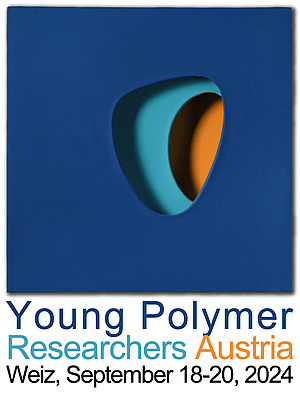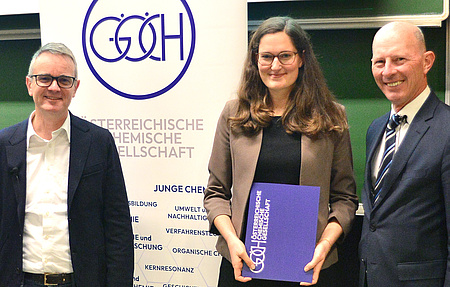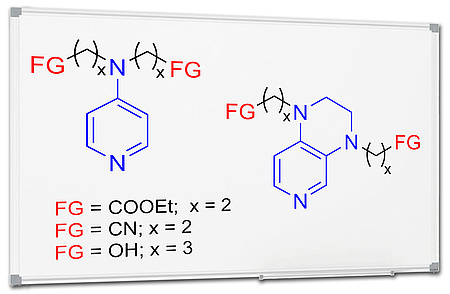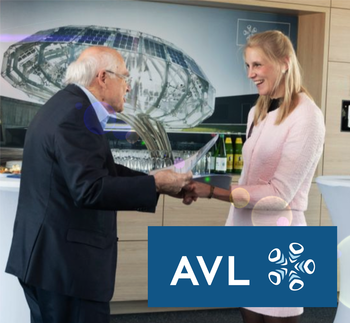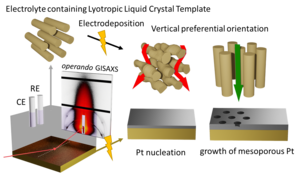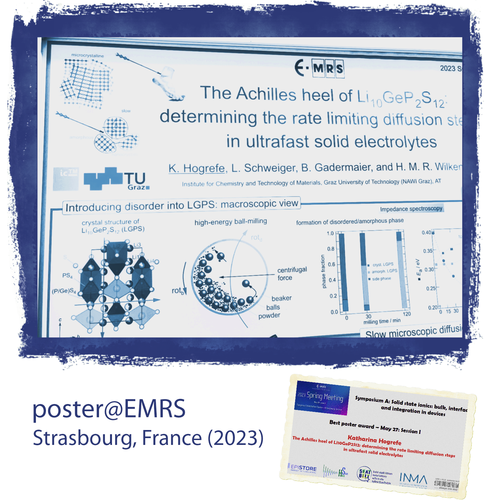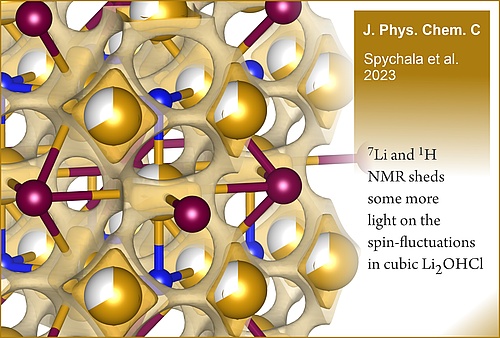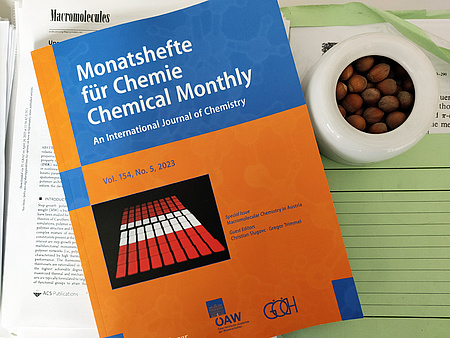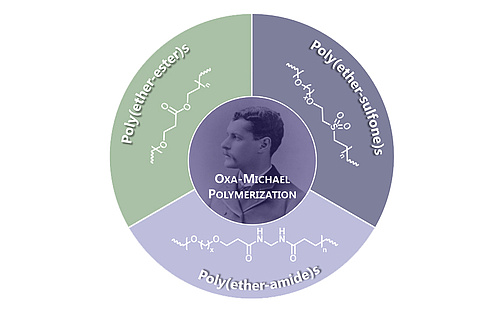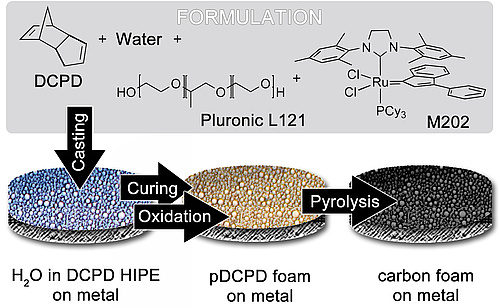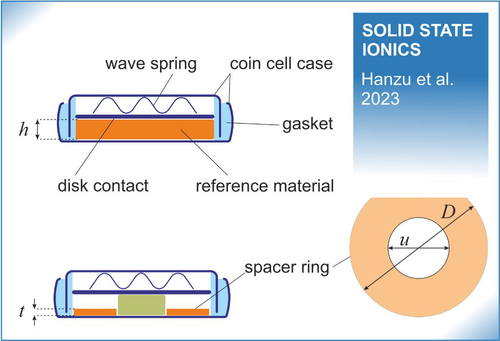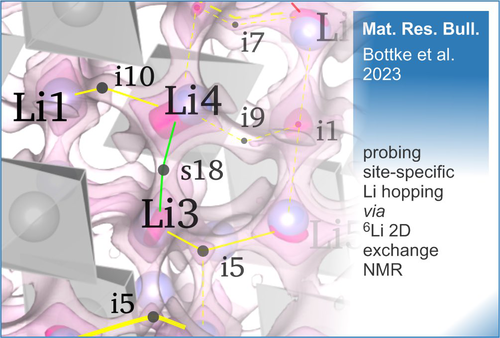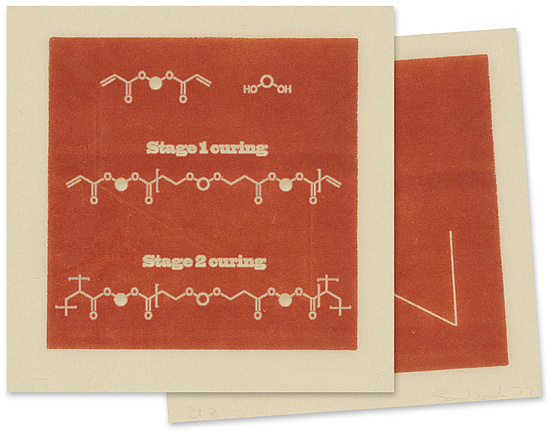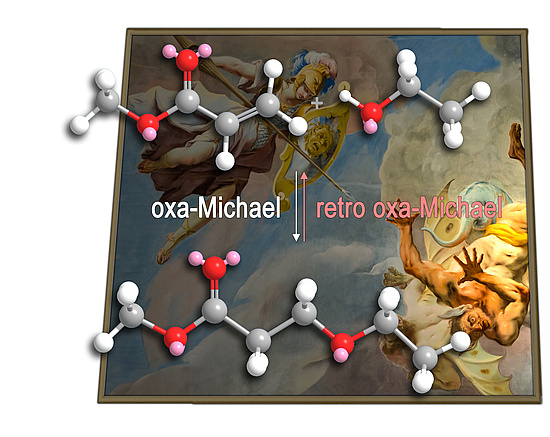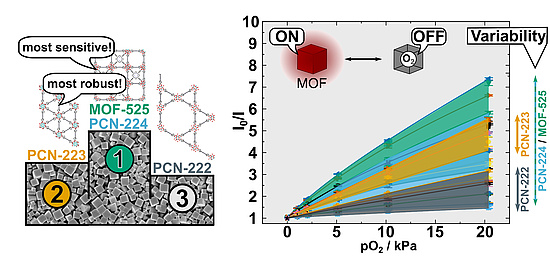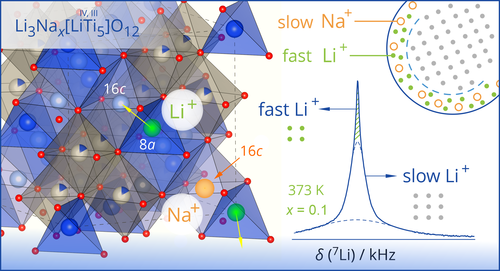
 ICTM organizes next year's YPRA meeting
ICTM organizes next year's YPRA meeting
The Young Polymer Researchers Austria (YPRA) meeting aims to bring together undergraduate and graduate students as well as early career postdoctoral researchers in the field of polymer science from Austria, but is also open to participants from other countries. The meeting will provide a forum for the presentation of research in the form of oral and poster presentations, with ample time for networking and some input from senior researchers and will be held in Weiz, Styria, from September 18-20, 2024. For more information, please visit the YPRA website, which will be updated continuously in the coming weeks.
 Förderpreis für Chemie for Karin Ratzenböck
Förderpreis für Chemie for Karin Ratzenböck
On November 17, 2023 Dr. Karin Ratzenböck was awarded the Förderpreis für Chemie for her dissertation entitled “Oxa-Michael Chemistry: Synthesis, Use and Reprocessability of Polyethers” by the Austrian Chemical Society (GÖCH). The award is endowed with € 2000 and donated by the Austrian Chemical Industry Association (FCIO). Many congratulations!
 Synthesis of new Lewis-bases of the DMAP family
Synthesis of new Lewis-bases of the DMAP family
A publication on a convenient preparation of electron-rich pyridines and their use in epoxy homopolymerization now out in Macromolecular Chemistry and Physics.
The simple and modular dialkylation of two electron-rich pyridine derivatives is achieved by aza-Michael reactions with electron-poor olefins (ethyl acrylate and acrylonitrile). Reducing the ester groups in the ethyl acrylate-derived compounds yielded the corresponding hydroxyl-containing derivatives. Subsequently, homopolymerization of phenyl glycidyl ether as well as an epoxy-alcohol polyaddition were catalyzed using the introduced compounds. In all cases an irreversible termination of the polymerization at temperatures above 100 °C occurred. The decomposition was particularly rapid in the case of pyridine derivatives containing hydroxyl groups. In contrast, at a constant temperature of 100 °C, the latter compounds gave the fastest phenyl glycidyl ether homopolymerization and high conversions were found for all electron-rich pyridine derivatives.
 Award of Excellence for Katharina Hogrefe
Award of Excellence for Katharina Hogrefe
Staatspreis für die besten Dissertationen in Österreich, 2023. Dr. Katharina Hogrefe will receive one of the prestiguous awards of excellence for her NMR studies on new solid electrolytes. The award ceremony will take place on December 7th in Vienna. See also: Staatspreise (bmbwf.gv.at). Katharina has recently received a price from the Hans List fonds. Congratulations.
 Job offer – PhD position on organic photovoltaics within a MSCA-doctoral network
Job offer – PhD position on organic photovoltaics within a MSCA-doctoral network

The Marie Skłodowska-Curie Actions Doctoral Network (MSCA-DN) OPVStability is an interdisciplinary research training network of 10 beneficiary universities from 7 countries. It is funded under the “Excellent Science” cluster of the Horizon Europe program. OPVStability aims to develop the Doctoral Candidate’s scientific expertise to produce excellent research, and interdisciplinary collaboration with scientists from different fields ranging from Physics, Chemistry, Materials Science and Data Science.
The main part of your work will be carried out at Graz University of Technology (Graz Austria, in the group of Gregor Trimmel), and secondment placements will take place at University of Potsdam and CERIC Trieste. The PhD project is funded for three years and would preferably start in December 2023.
Research will focus on:
i) Investigation of the role of interfaces and of the bulk heterojunction morphology on the stability of OPV
ii) Analyzing interactions and chemical reactions at the interfaces of OPV
iii) Developing a stabilization strategy to improve the lifetime of OPV devices
The applicant should have completed at least four- or five-years education with a Master’s degree or Diploma from a recognized university in Chemistry, Physics, Materials Science or in a related field and should be eligible as graduate student at Graz University of Technology. For more information read the job ad. Deadline for application is Oct. 31st, 2023.
 Order, disorder, order…
Order, disorder, order…
Since the discovery of templated electrodeposition of mesoporous metals some 25 years ago, scientists have speculated on how the nanostructure of the lyotropic liquid crystalline template is transferred to the metal film. In particular, in the case of the hexagonal lyotropic phase, it seemed puzzling why the long-range ordered pores in the metal film were predominantly oriented vertically with respect to the electrode surface, making the enormous inner surface of electrocatalytically active metals such as Pt and Pd fully accessible. The evolution of this phenomenon has now been observed in real time by Philipp Aldo Wieser and colleagues using in-operando GISAXS at the ELETTRA beamline. In their article (doi.org/10.1021/acsami.3c03316), which has just been published in ACS Appl. Mater. Interfaces, they report how the order of the nanostructure and the orientation of the pores at the electrode-electrolyte interface change during electrodeposition. In addition to the experts, this study could also be useful to technical chemistry students who have used and still use this process in the Technical Chemistry II Lab Course to learn about the fundamentals and applications of electrochemistry and electrocatalysis to better understand their experiments.
 Guest lecture by Prof. Marco Sangermano
Guest lecture by Prof. Marco Sangermano
Professor Marco Sangermano (Politecnico di Torino, Italy) will give a guest lecture entitled "Photopolymerization of bio-renewable monomers and oligomers" on June 20th, 2023 at 10h00 st in the lecture hall BMT.
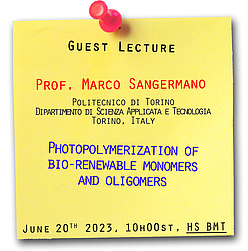 Abstract: UV-induced polymerization of multifunctional monomers has found many industrial applications, mainly in the production of films, inks and coatings on a variety of substrates including paper, metal and wood. Moreover, it has been demonstrated to be useful for more high-tech applications such as coating of optical fibers and fabrication of printed circuit boards. Part of the reason for the growing importance of UV-curing techniques, both in industrial and academic research, is a peculiar characteristic that induces fast transformation of a liquid monomer into a solid polymeric film having distinctive physical-chemical and mechanical properties. This polymerization technique can be considered environmentally friendly owing to the solvent-free methodology and is usually carried out at room temperature, thus conferring energy-saving advantages.
Abstract: UV-induced polymerization of multifunctional monomers has found many industrial applications, mainly in the production of films, inks and coatings on a variety of substrates including paper, metal and wood. Moreover, it has been demonstrated to be useful for more high-tech applications such as coating of optical fibers and fabrication of printed circuit boards. Part of the reason for the growing importance of UV-curing techniques, both in industrial and academic research, is a peculiar characteristic that induces fast transformation of a liquid monomer into a solid polymeric film having distinctive physical-chemical and mechanical properties. This polymerization technique can be considered environmentally friendly owing to the solvent-free methodology and is usually carried out at room temperature, thus conferring energy-saving advantages.
Within this frame, we reported different strategies in the direction of exploiting bio-renewable materials in UV-Curable formulations to achieve coatings, composites or 3D-printed hydrogels.
About the speaker: Marco Sangermano is Associate Professor of polymer science and technology at Politecnico di Torino, where he leads the Photopolymer lab. His research activity is focused on photopolymerization and its application on the fabrication of advanced hybrid materials, coatings, gas sensors, membranes, 3D printing, tissue engineering, and nanostructured polymeric coatings. He is also working on the development of new monomers from biorenewable resources to be used in the production of more environmentally-friendly materials. He currently collaborates with numerous academic and the R&D of many corporate partners worldwide. He is co-author of over 300 papers and several patents.
 Ion dynamics in Li-bearing antiperovskites
Ion dynamics in Li-bearing antiperovskites
Li and H Dynamics in Poorly Conducting Li2OHCl Directly Probed by Nuclear Spin Relaxation - few more information from NMR to complete the picture on ion dynamics in antiperovskites. See Jonas's work just published in J. Phys. Chem. C
 Curious about Macromolecular Chemistry in Austria?
Curious about Macromolecular Chemistry in Austria?
Then have a look to the current special issue of Monatshefte für Chemie - Chemical Monthly edited by Gregor Trimmel and Christian Slugovc. The issue contains a series of articles representative for the Macromolecular Chemistry conducted in Austria.
The issue includes four works on polymer photochemistry on hydrogels, sequence-dependent orthogonality in vat photo-polymerization, multiphoton grafting onto polymers and easily degradable photopolymers. What is more are works on nanophase separated acrylamides and underwater glues or chemical vapor deposition with carbohydrate-derivatives and electro-active polymers. Further two works on porous polymers report carbon-foam metal foil composites and high-flux water filters made by foaming of oxidized nano-cellulose. Finally, a review article on poly(ether)-synthesis via oxa-Michael polymerization is disclosed.
 Review on oxa-Michael polymerization available
Review on oxa-Michael polymerization available
Researchers of the CD-Laboratory for Organocatalysis in Polymerization published a review article on making poly(ether)s by oxa-Michael reactions of alcohols and electron deficient olefins. This route provides access to poly(ether)s featuring an additional functional group, e.g. an ester- or an amide-group, in the polymer backbone and rivals similar polymers prepared from less sustainable amines or thiols. The article summarizes the current state of the art and discusses challenges as well as future perspectives of the oxa-Michael polymerization.
 Making porous current collectors for batteries
Making porous current collectors for batteries
Researchers from the National Institute of Chemistry Ljubljana, Varta Innovation GmbH and Porous Materials@Work for Sustainability disclosed a way of preparing conducting macroporous carbon coatings on conductive substrates. The work published in Monatshefte für Chemie is focusing on the preparation of poly(dicyclopentadiene) derived porous conductive coatings on metal foils and their scope and limitation when used as binder free current collector in lithium-sulfur cells.
 Stray Capactiances in Battery Research
Stray Capactiances in Battery Research
Electrolytes and impedance spectroscopy; take care, in general, of stray capacitances affecting the impedance response. Ilie Hanzu et al. show how coin cells might work as airtight containers to study battery electrolytes. See his paper published with the team of Solid State Ionics.
 Site-specific Li hopping processes visulaized by 2D EXSY NMR
Site-specific Li hopping processes visulaized by 2D EXSY NMR
6Li NMR rules: beta-Li3VF6 provides a range of important Li+ geometric environments in one and the same crystal structure to elucidate qualitatively a ranking of the energetic exchange preferences; great collaboration with Martin Lerch's group from TU Berlin. Paper appeared in Mat. Res. Bull.
 Dual-curing of electron-deficient olefins and alcohols
Dual-curing of electron-deficient olefins and alcohols
In the CD-laboratory for Organocatalysis in Polymerization a method to anionically copolymerize electron deficient olefins and alcohols has been developed. Now the results are published in Polymer Chemistry and are available for everybody as an open access communication.
In particular, the authors demonstrate the preparation of cross-linked polymers from off-stoichiometric oxa-Michael formulations proceeding via a self-limiting base catalyzed reaction. In the first place the difunctional Michael acceptors such as diacrylates react with substoichiometric amount of diols. Later, preferably at higher temperatures, the remaining vinyl groups are then anionically polymerized. For both steps of the dual curing process, the same catalyst is used. The method allows for a convenient tuning of the properties of the resulting polymer networks by simply varying the amount of the diol in the formulation.
 Corrosion of passive aluminum anodes in a chloroaluminate deep eutectic solvent for secondary batteries
Corrosion of passive aluminum anodes in a chloroaluminate deep eutectic solvent for secondary batteries
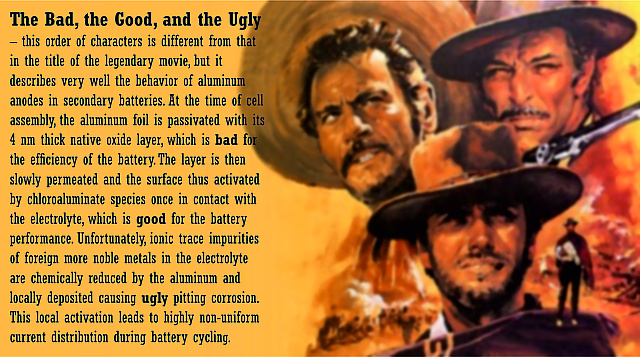
David Moser and colleagues published these observations in ACS Appl. Mater. Interfaces.
 Making and breaking oxa-Michael derived bonds in polymers
Making and breaking oxa-Michael derived bonds in polymers
Researchers from the CD-laboratory for Organocatalysis in Polymerization and the National Institute of Chemistry in Ljubljana disclosed a fundamental work on using the reversibility of the oxa-Michael reaction in macromolecules in the journal Polymer Chemistry.
In model studies with oxa-Michael adducts derived from vinylsulfones, acrylonitrile or acrylates it could be shown that the Brønsted-base catalyzed retro oxa-Michael reaction allows for fast alcohol exchange at temperatures above 100 °C. The reversibility can be utilized to build covalent adaptable networks as demonstrated by reprocessing oxa-Michael derived polymer networks at temperatures above 140 °C. Furthermore, oxa-Michael polymers can be depolymerized into small fragments in additional presence of alcohols. These findings show opportunities on how to face the challenges regarding the circular economy of plastics.
 Porphyrinic MOFs for oxygen sensing: Mirror, mirror on the wall, who's the most sensitive of them all?
Porphyrinic MOFs for oxygen sensing: Mirror, mirror on the wall, who's the most sensitive of them all?
A group of researchers from the Porous Materials@Work for Sustainability consortium uncovered the structure sensitivity relationship in porphyrinic zirconium-organic frameworks when used for optical oxygen sensing. The paper in ACS Applied Nano Materials establishes an oxygen sensitivity trend increasing in the order PCN-222 < PCN-223 < PCN-224. High sensitivity is above all caused by a maximized porphyrin−porphyrin separation in these nanostructured materials, which results in an increase of the fluorescence decay time, which, in turn, increases the probability of the quenching event. Defects in the nanostructure are another factor explaining variations in sensitivity within the same MOF type prepared with varying reaction conditions. Properly grown PCN-224 crystals show the highest sensitivity ever reported for a porphyrin based oxygen sensing material.
 Na-ion batteries: Fast interfacial ion dynamics in LTO
Na-ion batteries: Fast interfacial ion dynamics in LTO
J. Physics: Energy: We probed rather fast Li and Na exchange in the solid solutions of sodiated Li4NaxTi5O12 (LTO). LTO is one of the most important anode materials guaranteeing extremely stable cycling conditions.
While Na(23) NMR helped throwing light on self-diffusion properties and activation barriers, with Li(7) NMR we were able to directly visualize the fast Li ions dynamics in the interfacial regions of the nanostructured sample. Download the paper from IOP.


